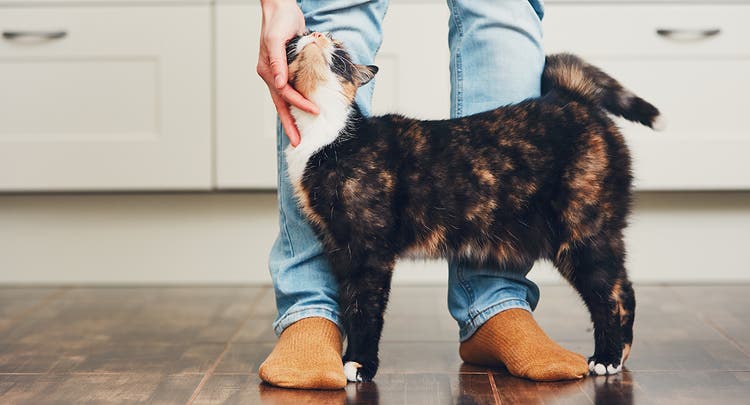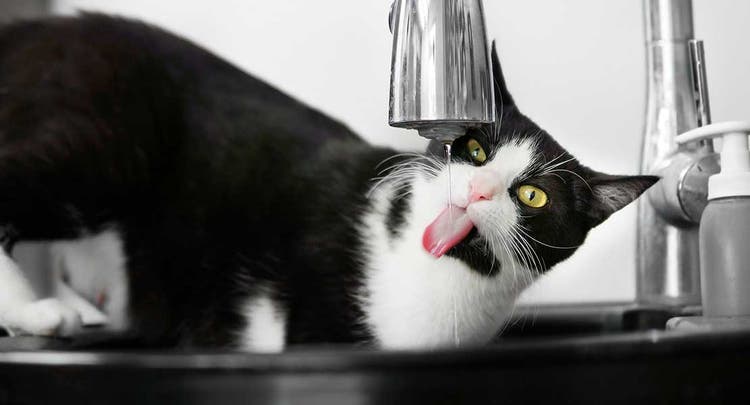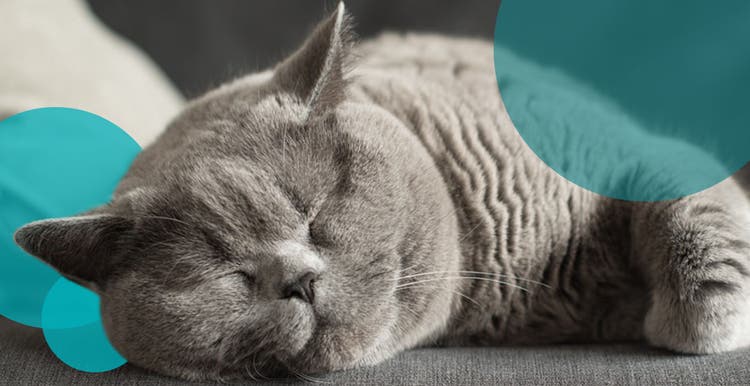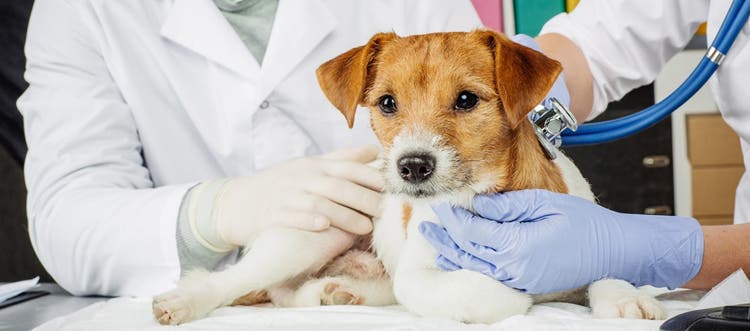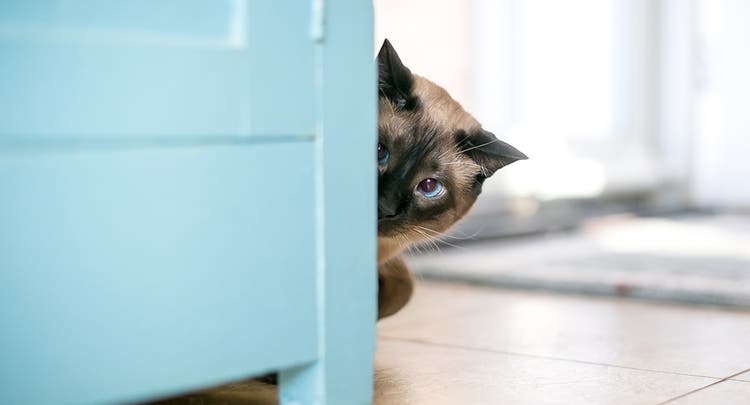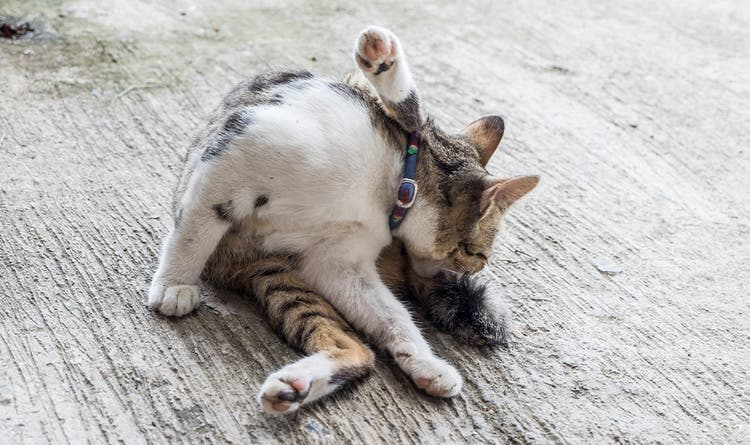What to expect when treating feline diabetes.
If you suspect your cat has feline diabetes — maybe they’ve seemed thirstier than usual, or are displaying other typical signs of the condition — the first step is to schedule an appointment with your vet. From there, a few diagnostic tests will determine whether your pet has feline diabetes.
If your cat is diagnosed, you should discuss treatment options with your vet and ask questions about how to manage the condition and ensure your cat lives a happy, comfortable life. Here’s what you should know.
How Veterinarians Diagnose Feline Diabetes
Cats with feline diabetes have difficulty regulating their blood glucose (sugar) levels, and diagnosing the condition begins with testing those levels. This is typically done through a blood test performed at your veterinarian's office.
The blood glucose level indicates the amount of sugar in a cat's blood, providing valuable information about their ability to regulate blood sugar. Different blood tests are used to diagnose feline diabetes, and among the more common is the fructosamine test, which measures the average blood sugar level over the past few weeks, giving your veterinarian a better look at overall sugar levels. Your veterinarian may choose to do some additional tests, including urinalysis, to make an accurate diagnosis.
These tests can also help identify the severity of the disease and conditions that contribute to or result from it. These conditions may include pancreatitis (inflammation of the pancreas), chronic kidney disease and hyperthyroidism (overactive thyroid), which may cause similar symptoms and require different treatment approaches. That’s why accurate diagnosis is crucial.
Treating Diabetes in Cats
There are two main methods of treating feline diabetes: insulin therapy and non-insulin treatment, such as Bexacat™ (bexagliflozin tablets). Let's take a closer look at these options.
Insulin Therapy for Feline Diabetes
Insulin is currently the most common treatment for feline diabetes. It helps regulate blood glucose levels by replacing or supplementing the insulin a cat's body cannot produce in sufficient amounts. Insulin is typically administered through twice-daily injections, and the dosage depends on the cat's individual needs.
Insulin therapy has proven highly effective in regulating blood sugar levels in cats with diabetes and allows vets to design an individualized treatment plan based on the specific needs of the cat. Your veterinarian can adjust the dosage and frequency of insulin injections to achieve optimal blood glucose control.
However, insulin therapy can be challenging for some cat owners. It may take time and practice to become comfortable with giving injections to your cat. Some cats may even resist injections or have difficulty tolerating them. Additionally, insulin must be refrigerated, which creates complications when traveling with or boarding your cat.
For many owners, adherence is a significant issue with insulin therapy. In fact, 88% of pet owners admit that insulin therapy interferes with their schedule and 62% find it difficult to administer insulin, or have an uncooperative cat.1 As a result, 10% of pets diagnosed with diabetes are euthanized at the time of diagnosis, and another 10% are euthanized within a year of diagnosis, which highlights just how difficult it can be to treat this disease.2
Should you pursue insulin therapy, you’ll need to monitor your cat’s blood glucose throughout the day to ensure they are at the appropriate level. This may involve regular vet visits or at-home blood glucose monitoring, which requires a glucose monitor, as well as daily commitment and effort.
Non-insulin Therapy for Feline Diabetes
Bexacat is an FDA-approved alternative treatment option for feline diabetes. This small, flavored tablet helps control blood sugar levels in newly diagnosed cats naïve to insulin by increasing the amount of sugar eliminated in the urine. So instead of twice-daily injections, Bexacat can be administered simply, without causing your cat pain.
As with any medication, there are limitations and possible side effects, which should be discussed with your veterinarian before beginning any treatment. But Bexacat has proven effectiveness: Cats using Bexacat demonstrated decreases in average blood glucose concentration by 68.7% in just eight hours with minimal risk of hypoglycemia.1
The advantages of Bexacat become clear when compared to traditional therapies. No needles, no refrigeration — just a once-daily flavored tablet.
Two Approaches to Feline Diabetes: Insulin and Bexacat
Benefits of Insulin Therapy:
- Effective blood glucose control
- Familiarity with veterinary professionals
- Can be used in nearly all cats with diabetes
Benefits of Bexacat:
- Effective blood glucose control
- Needle-free administration & Dose never changes
- Once-daily tablet & Can administer with food
Questions to Ask Your Vet about Feline Diabetes Treatments
When discussing feline diabetes treatment options with your veterinarian, here are some questions to ask:
- What are the available treatment options for feline diabetes?
- What are the benefits and drawbacks of each treatment option?
- Would my cat be a candidate for Bexacat?
- How effective are the different treatment options in managing blood glucose levels?
- What are the potential side effects or complications?
- How often will my cat need to receive treatment or medication?
- Can you provide guidelines on monitoring my cat's blood glucose levels at home?
- What dietary changes, if any, are recommended to manage feline diabetes?
- How often do I need to come back to the vet for checkups?
It's important to have an open and thorough discussion with your veterinarian so you can make informed decisions about your cat's diabetes treatment. Additionally, your veterinarian may have specific recommendations or guidelines based on your cat's individual needs and medical history. Treating feline diabetes requires diligence and patience, but can create a longer, happier life for your cat.
Bexacat, Elanco and the diagonal bar logo are trademarks of Elanco or its affiliates.
©2023 Elanco or its affiliates.
References
- Hadd MJ, Bienhoff SE, Little SE, Geller S, Ogne-Stevenson J, Dupree TJ, Scott-Moncrieff JC. Safety and effectiveness of the sodium-glucose cotransporter inhibitor bexagliflozin in cats newly diagnosed with diabetes mellitus. J Vet Intern Med. 2023 May 6.
- Niessen S, Hazuchova K, Powney S, et al. The big pet diabetes survey: perceived frequency and triggers for euthanasia. Vet Sci. 2017;4(27):1-13.
Related Articles
Indication:
Bexacat is indicated to improve glycemic control in otherwise healthy cats with diabetes mellitus not previously treated with insulin.
Important Safety Information:
Before using Bexacat, you must read the entire package insert, including the boxed warning. Cats treated with Bexacat may be at an increased risk for conditions called diabetic ketoacidosis or euglycemic diabetic ketoacidosis, both of which may result in death. It is critical that cats taking Bexacat be examined by a veterinarian promptly if sudden decreases in appetite or water consumption occur, or if weight loss, tiredness, vomiting, diarrhea, or weakness are seen. Discontinue Bexacat and call your veterinarian immediately if any of these occur as they could be signs of diabetic ketoacidosis or euglycemic diabetic ketoacidosis. Before giving Bexacat, be sure to talk with your veterinarian about any past illnesses your cat has had including if your cat has ever been on insulin, as cats that have been treated with insulin should not receive Bexacat. Do not use Bexacat if your cat has experienced pancreatitis, liver disease or reduced kidney function as serious side effects may occur. Bexacat is available by veterinary prescription only. Not for human use. Keep out of reach of children. Contact a physician immediately if swallowed accidentally.
